It is impossible to make the decision of bugging out or staying in place before you have to. In an emergency, anything can go wrong and emergency scenarios are hard to predict. Understanding your risks and disaster preparedness can help you decide whether you bug out or stay in place.
It is advisable to bug out if your house and safety are in imminent danger of flooding, wildfires, hurricanes, war, or civil unrest. You should consider staying in place if you find traveling far more dangerous.
Knowing which situations to enter or exit can increase your chances of surviving. Read on to learn the pros and cons between the two.
Quick Navigation
- Should You Bug Out or Stay In Place?
- Prepper Jargons
- “Bugging Out” – What is it?
- Why Would You Need To Bug Out?
- Where Should You Bug Out To?
- What To Take When Bugging Out
- Bugging Out Pros & Cons
- What Exactly is Bugging In?
- Reasons To Bug In
- How Long Should You Bug In For?
- How Do I Prepare for Bugging In
- Bugging In Pros & Cons
- Conclusion
Should You Bug Out or Stay In Place?
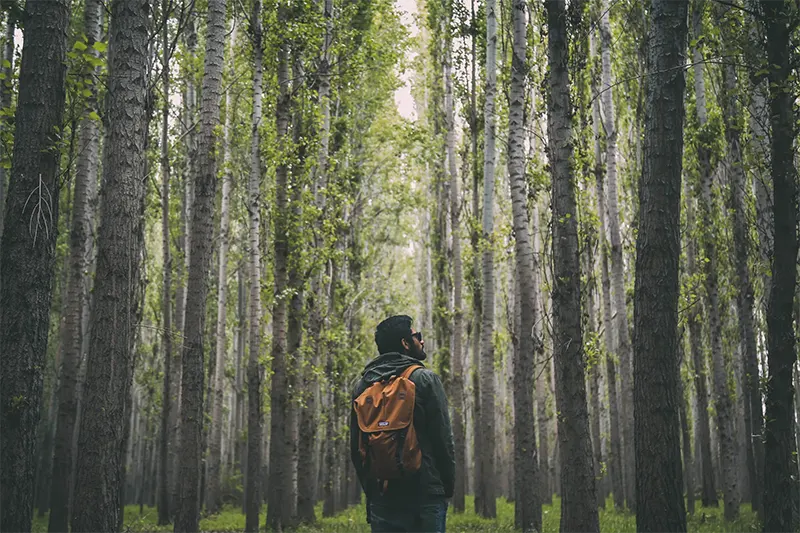
| Bug out when… | Stay in place when… |
| Your supply is low or compromised | You are in a place with an adequate supply |
| Your house is unsafe for floods, gas leaks, radioactivity, and other natural calamities | You are not in imminent danger inside your home |
| You are outnumbered, out-armed, and without recourse in the event of war | You might be in more danger traveling to your bug-out place than if you stayed at home |
| You have got sufficient time to prepare for the tragedy and may leave before it happens | You have family members that are elderly, young, disabled or have health difficulties |
| You are confident that the spot where you want to bug out is safer than where you are now | You want other people to locate or get in touch with you when the grid is down |
Prepper Jargons
There is much information to take in here, but understanding will be a lot easier if you know the terminology. You will encounter the following prepping terminology throughout this article:
- Prepper – A prepper is a person who has prepared for a calamity and is prepared to survive. In this case, that’s you.
- Bug-out bag or BOB / 72-hour Emergency Kit – The BOB has everything you need to survive.
- Bug-out location or BOL – When a disaster occurs and your house is no longer safe; you might hide out in remote locations known as BOL.
- SHTF – ” SHTF ” means “Sh*t Hit The Fan.” It’s a shorthand way of suggesting that some horrific circumstances have occurred.
- MRE – MREs, or “Meals Ready to Eat,” are nutrient-rich, portable meal rations.
“Bugging Out” – What is it?
Bug out is a military term that preppers often use when you might need to leave your home quickly because of something dangerous. Not all the time, “bugging out” means going to live in the woods.
Your safety and success depend on having a well-stocked, planned destination. If you are bugging out, you need to be ready to leave your home and possessions behind and possibly never see them again.
Most of the time, you want to go to a pre-planned bug-out location. This location should be a safe place that is far from crowded places. It should have a lot of valuable natural resources and must make you feel safe.
Bug Out = Evacuate → Flee → Vacate → Leave Property
Why Would You Need To Bug Out?
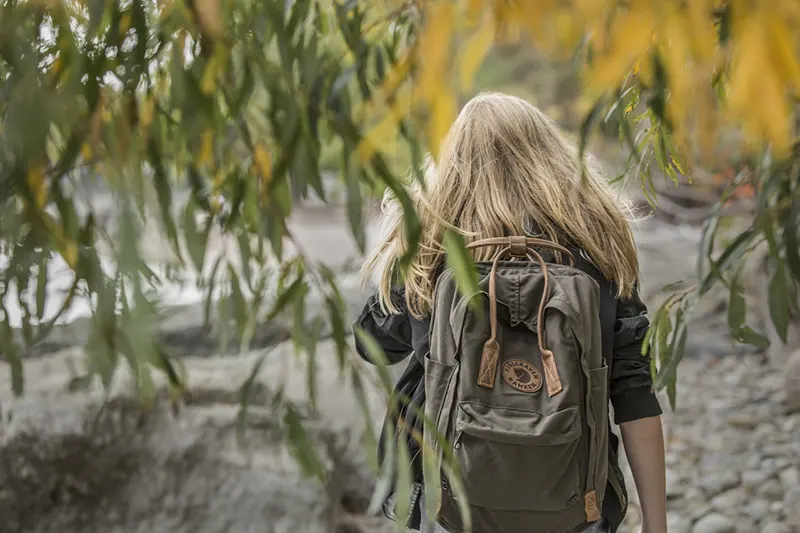
Here is a list of many situations where bugging out may be the best thing to do.
Natural Disasters
Be aware of natural disasters that could happen in your area, prepare an evacuation plan, keep your bug-out bag close, and be aware of emergency broadcasts for warnings and instructions on how to get out.
- Earthquake: Even if your home’s structure is fine, you may need to be ready for damage to the infrastructure that leaves you with a power outage.
- Flooding: Don’t take a chance and get to a safer location as soon as possible.
- Wildfire: You need to leave quickly if a raging wildfire is coming. In this case, you should be able to find a place to stay in the area until it is safe to go back home.
- Volcanic eruption: A volcano’s pyroclastic flow, heavy ashfall, and lava flows are dangerous and necessitate you to leave as safely as possible.
Civil Unrest
Usually, civil unrest happens after major and natural disasters. If there is more looting, rioting, and general disorder in your area, it is best to leave before things worsen.
Here are things to think about when deciding whether or not to leave when there is civil unrest.
- Is there an immediate danger to your home and family’s safety?
- Is the situation worsening to the point where staying there could put you in danger?
- Would going somewhere else make you feel safer than where you are now?
War
War doesn’t care about civilians, so when war comes to your area, you must stay prepared and find a safer place.
- Civil war: A country with people torn apart by civil war needs a haven, possibly in another country. Preparing for where you are going and how you will stay safe is crucial.
- Nuclear war: Nuclear fallout will be a big problem, and anyone who makes it through the first wave will have to look for scraps.
Pandemic
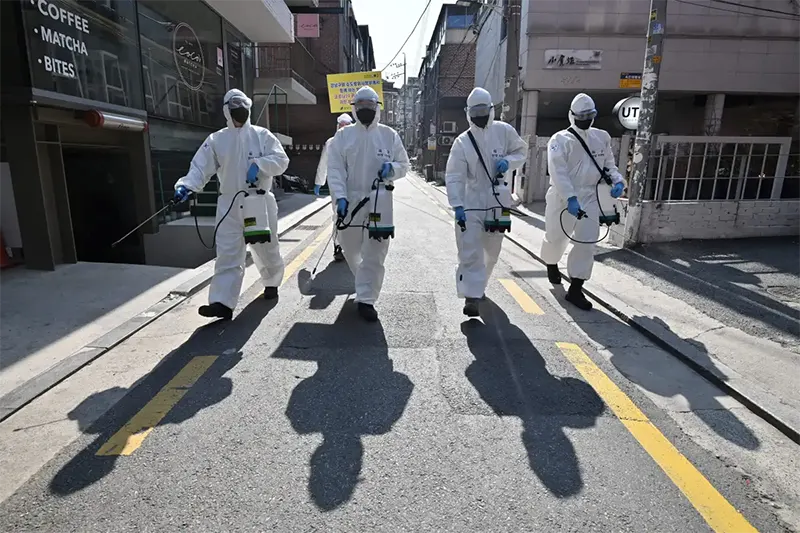
One lab rat is all it takes for a dangerous virus to spread. As rising costs and political posturing make it harder for people to get medical care, disease rates can rise in groups that aren’t protected.
Keep an eye on the news for signs of possible attacks or a new wave of disease. It is the best idea to move to a place with fewer people, better health care, and more supplies.
Cyber Attack
Not too long ago, people laughed at the idea of cyberattacks. In today’s world, hackers can now shut down power grids and even disable the safety features of nuclear power plants.
Get off the grid and find a place where hackers’ electronic tendrils can’t reach you when hackers call.
Where Should You Bug Out To?
Leaving your home without a safe place to go would be risky. Plan carefully for a place that has everything you and your family members need. Plan to visit at least one of the following places.
- Outside your home’s proximity, in case of a fire or other danger.
- Outside your neighborhood in case of emergencies nearby, like a HAZMAT spill or an active shooter
- Neighboring town for an isolated event like flooding, an earthquake, a wildfire, local riots, etc
When choosing your BOL (bug-out location), it is vital to consider its proximity to the city, isolation from densely populated areas, easy access to water, and self sufficiency.
What To Take When Bugging Out
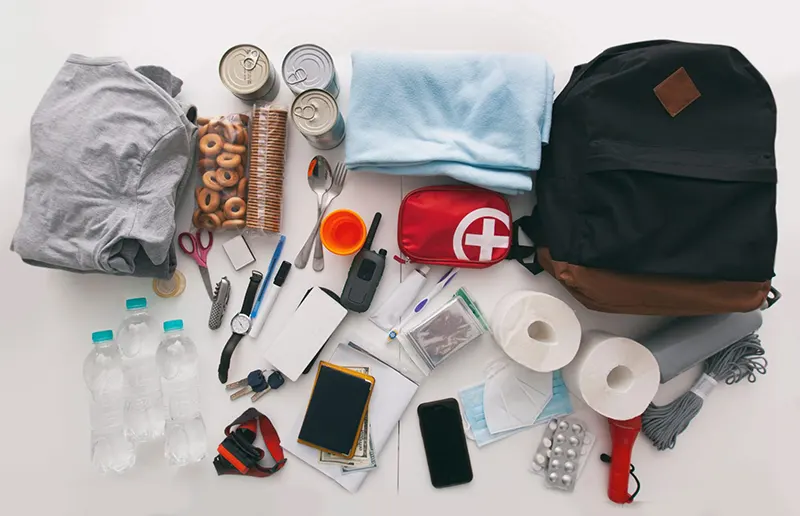
Everyone will have different needs for their BOB, but everyone should have certain things on hand in case of emergency scenarios.
- Portable shelter: A tent or tarp, a roll of duct tape, and some rope work great.
- Water and food: Remember the MREs.
- A first-aid kit with bandages, and a kit for stitching up wounds: Remember that you’ll need to know how to use the things in your first-aid kit.
- Items for hygiene and health will help you stay clean, healthy, and comfortable.
- A flashlight, batteries, and things to start a fire: When you’re on the move, you need all these things to stay alive.
- Dependable vehicle: Always keep your vehicle in good working order. Make sure you have a kit in your car with tools you might need to keep your car running.
Bugging Out Pros & Cons
Before leaving the safety of your home, you should carefully consider your options.
Pros
- Going to a safer place with more resources
- Opportunity to find a better place to live
- You always have your essential things with you
- Freedom of movement
Cons
- Unpredictable weather
- Lack of medical assistance
- Physical and mental limits
- Limited resources
Worst case scenario and you bug out, remember to act like you won’t be coming back. Don’t think you can eventually run back home “real quick” to get something else if you need to. With that, there are times when the safest thing to do is to bug in.
What Exactly is Bugging In?
Preppers often use the term “bugging in” to describe when they decide to face dangers from the safety of their well-stocked, safe home. Unless the situation calls for it, staying in your home and facing the threat is much better than bugging out.
There is no right or wrong handling of emergencies, and you will have to decide based on your situation and responsibilities. If it is too dangerous to go somewhere else or you’re ready for whatever emergency is happening where you are, the best course is to stay put.
Bug in = Sanctuary-in-Place → Stay Down → Remain at Home
Reasons To Bug In
Some of these disaster scenarios will be in the “bug out” section, but the details of the situations will be very different.
Natural Disaster
You may find yourself unable to leave before things get bad. If a natural disaster is already happening and your only way out is blocked, bugging in might be the best thing to do. Stay inside and hunker down unless your area is in immediate danger of being wiped out completely.
Civil Unrest

Riots and acts of theft can happen without warning. You should stay put if there is too much violence and traffic jams outside your house. Once the movement stops, think again about whether you should bug out before the next wave comes.
Biological or Chemical Attack
If a chemical or biological terrorist attack happens, it might be best to stay inside and wait it out. For example, anthrax is a deadly agent that can be spread over a large population and kill anyone who goes outside and breathes it in.
Nuclear Disaster
Most of the time, it is best to avoid the fallout as soon as possible. But if things happen too quickly and the affected area is so big that you might not be able to escape from the radiation, you’ll have to stay where you are. Nuclear disaster preparedness is vital.
Virus Outbreak
Depending on how bad the virus outbreak is, you may be unable to leave your house for fear of getting sick, mainly if the air spreads the disease. If the virus spreads through the air, you should get out the duct tape and plastic sheeting to stay safe at home.
How Long Should You Bug In For?
Now that you’ve decided to bug in, you need to figure out how long you will prepare. The government says that each person should have enough food, water, and supplies for three days.
We advise you to get a week’s worth of supplies. Then, as time goes on and your budget allows, you can add to what you already have. If you have enough supplies to last for six months, you are well on your way to being ready for anything.
One year’s worth would be best because even if the event is so bad that the infrastructure doesn’t get back to normal, you will have enough time to plan your next move without worrying about your next meal.
How Do I Prepare for Bugging In
The only person in charge of your family’s safety when the time comes is you. No matter what you choose, you will need these strategies to survive.
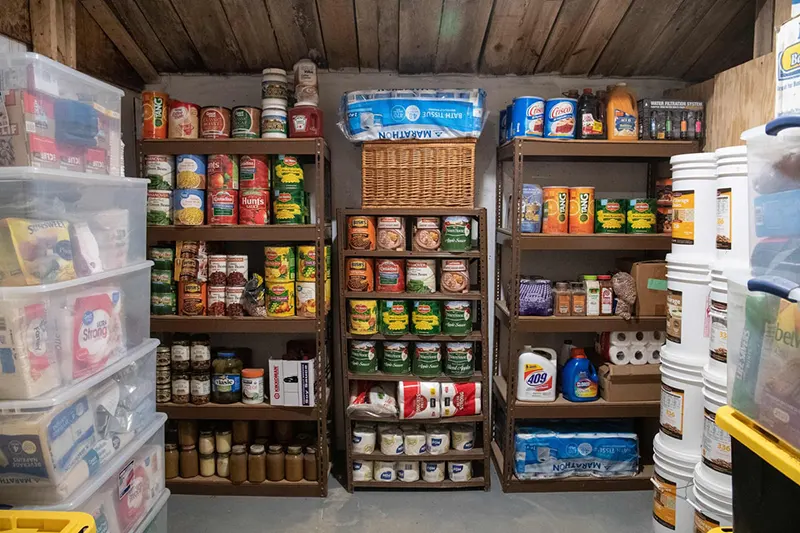
Stock up on supplies: The main difference between bugging in and bugging out is how many supplies you can have. In the case of bugging in, you can have as many supplies as you can fit in your home.
Build a survival kit: Your survival kit should have everything you need to stay alive while hunkering down in one place. Make sure also to have a first aid kit and learn how to do basic medical things.
Have a safety plan: Your current location needs to be safe and easy to adequately defend. Your security plan may include ways to keep an eye on things and ways to use weapons.
Information and communication: If you want to hide out during a nuclear attack or natural disaster, you’ll need to be able to get important information and talk to people outside.
Bugging In Pros & Cons
Let’s look at some reasons you might want to bug in.
Pros
- A place to live safely: Even with downed power lines, our home is a safe place to hide
- Adequate stock of own food and water
- Complete sanitation like toilet paper, soap, etc.
- Relationships in the community
- Home field advantage
Cons
- Minimal supplies – Is it possible to keep enough supplies and basic necessities to last a month?
- Getting targeted by thieves, looters, or neighbors who need help
- Few ways to gather more resources
- Isolation for a long time hurts mental and physical health
Conclusion
It’s hard to decide whether to leave and risk a dangerous trip to bug-out locations or stay home and wait out the threats. It’s important to be ready to leave for a safer place or stay where you are for as long as possible.
Consider and learn about the pros and cons of staying in and bugging out. When it comes to emergency preparedness, there is no one size fits all solution. It’s hard to know when the disaster strikes, but planning can keep you safe when it does.
